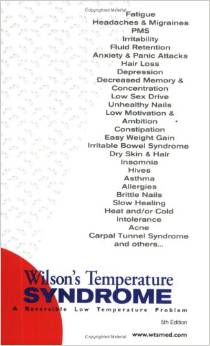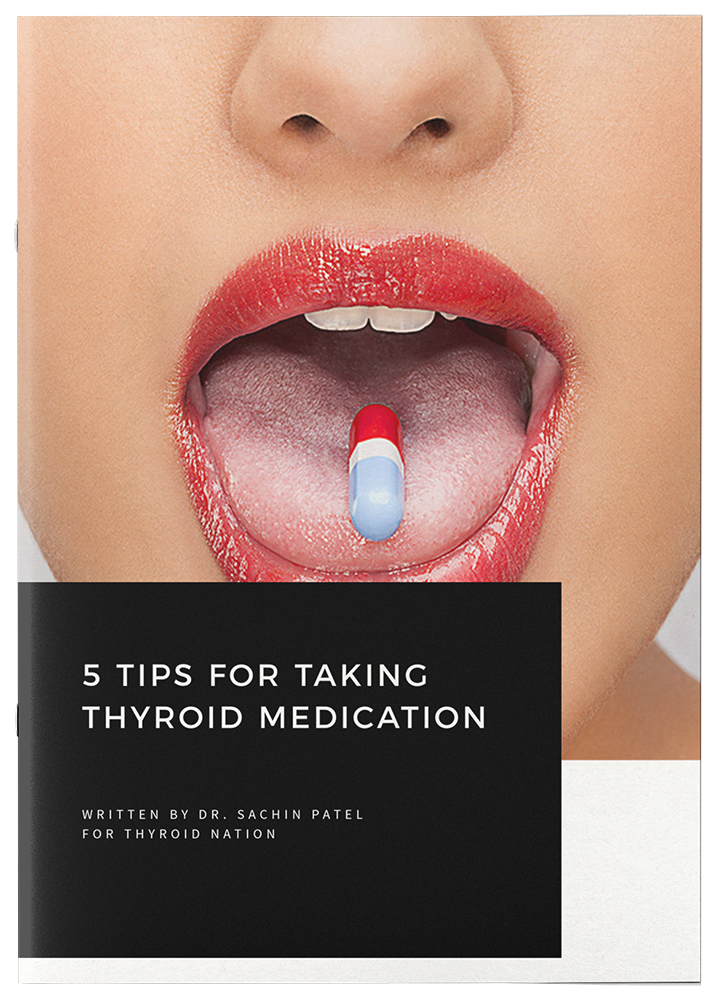
Robert Thompson, M.D.
and Kathleen Barnes, Calcium Lie
Thyroid Nation
Editor’s Note to Readers:
These descriptions of the types of hypothyroidism are Dr. Thompson’s discoveries, based on his 13 years of clinical experience with patients with these conditions and his wide knowledge of biochemistry, physiology and human nutrition. The medical profession does not generally recognize them thus far, and, in fact, they are being described as five distinct types in this book for the first time. It would not be surprising if they are ridiculed by mainstream medical practitioners out of ignorance.
The thyroid, a tiny butterfly-shaped gland that straddles your windpipe, weighs less than an ounce. It sends signals to every one of the trillions of cells in your body, billions of times every single day. It governs the metabolic rate of every cellular and bodily function. Without your thyroid, you’d wind down like a child’s toy. Eventually, you would die.
Many experts, including me, believe that thyroid disease is the most underdiagnosed illness in America. A paper published in the Journal of the American Medical Association nearly 60 years ago asserted that low thyroid function or hypothyroidism is the most common disease of those who enter a doctor’s office. We know today, hypothyroidism is the diagnosis doctors most often miss.
I have found in my practice that thyroid hormone resistance (as described for the first time in The Calcium Lie in 2008) is beyond epidemic level. It is now at a pandemic level and it is directly related to excess dietary calcium.
The problem is much worse today because most doctors will simply take a TSH (thyroid-stimulating hormone) blood test and pronounce that your thyroid is “fine” based on outdated testing procedures and reference levels that are often “normal” even when you show all the classic signs of low thyroid function (hypothyroidism). I can’t even begin to document how many of my patients were told this untruth before they came to me.
Physicians have so heavily relied on blood tests to make the diagnosis of hypothyroidism that they no longer recognize the actual symptoms and physical findings that often are present in patients with allegedly normal TSH levels that are actually clinically hypothyroid. That’s why patients with a wide range of symptoms we know are indicative of hypothyroidism frequently have so much difficulty getting a diagnosis and treatment.
 By conservative estimate, 80 to 90 percent of the population has at least some degree of hypothyroidism. Clinical symptoms are present and yet patients’ complaints are often unrecognized or ignored by doctors. In fact, many people with hypothyroidism have been labeled as hypochondriacs by one or more doctors and they are often treated for depression when their problem is actually low thyroid function.
By conservative estimate, 80 to 90 percent of the population has at least some degree of hypothyroidism. Clinical symptoms are present and yet patients’ complaints are often unrecognized or ignored by doctors. In fact, many people with hypothyroidism have been labeled as hypochondriacs by one or more doctors and they are often treated for depression when their problem is actually low thyroid function.
There is a connection between excess calcium, mineral deficiency, and hypothyroidism.
I’d like to clearly define for the first time what I consider are the five different types of hypothyroidism:
Type 1 hypothyroidism
is the failure of the thyroid glands to produce sufficient quantities of thyroid hormones to keep the body running properly. It is classically diagnosed by blood tests, specifically by a patient having an elevated TSH level (indicating low thyroid hormone production).
The new upper level of “normal” was reduced to 3.0 by the American Endocrinology Association in 2011, but it should be much lower based on overwhelming scientific evidence. Most labs still report upper normal as around 4.5 (with a “normal” range of 0.45 to 4.5).
Type 2 hypothyroidism
is thyroid hormone resistance. Adequate levels of the hormones are being produced, but the body is simply not able to recognize or use them, similar to the problem with type 2 diabetes. Type 2 hypothyroidism is diagnosed by signs and symptoms, low basal body temperature (less than 97.8), and by ruling out type 1 hypothyroidism by having a more normal TSH of less than 2.0.
It’s common for people to have more than one type of thyroid disease. For example, patients with type 1 can still have thyroid hormone resistance, type 2, and they need slightly greater than normal hormone replacement doses to correct their metabolic rate.
Type 3 hypothyroidism
is the presence of autoimmune thyroid disease, probably caused by bromine exposure or some other toxicity to the gland with secondary inflammation. It’s usually called Hashimoto’s thyroiditis, but there are several other forms.
 Type 4 hypothyroidism
Type 4 hypothyroidism
or severe selenium deficiency (SSD) is rare. I have seen only one case that I could actually accurately diagnose, but there may be many borderline cases and some type 1 patients may have severe selenium deficiency as an underlying cause of their problems.
Type 5 hypothyroidism
was described in 1992 by Dr. Denis Wilson as “Wilson’s Temperature Syndrome.” He associated the lower basal body temperatures and symptoms of hypothyroidism with an elevation of reverse T3 or RT3, a thyroid-blocking hormone of the actual active thyroid hormone called T3.
Most patients with type 5 hypothyroidism, if it is recognized at all, are merely being treated incorrectly with T4 alone (called Synthroid or levothyroxine). This is exactly how most of the people in the U.S. and worldwide are incorrectly treated for hypothyroidism today.
(excerpted from The Calcium Lie II: What Your Doctor Still Doesn’t Know by Robert Thompson, M.D. and Kathleen Barnes)
**This article originally featured on CalciumLie.com**
About the Authors
Dr. Thompson is a board-certified obstetrician and gynecologist who practices in Soldotna and Anchorage, Alaska. While he is technically a “women’s doctor,” his work to expose The Calcium Lie has brought him many patients who fall outside his specialty. In fact, now more than half of his patients come to him for nutrition counseling and many of them have found long-term relief from chronic disease, including obesity, diabetes, hypothyroidism and adrenal fatigue. He happily counts among his patients’ many men and children as well as women who seek out his assistance as a gynecologist as well as a nutrition specialist. He received his medical training at the University of Kentucky and has practiced in California, Pennsylvania, and Hawaii as well as in Alaska. Dr. Thompson lives in Soldotna, Alaska, where he takes great delight in fly fishing, hunting, hiking, canoeing and skiing and playing concert violin. Find him at, CalciumLie.com
Kathleen Barnes is a widely traveled journalist with more than 35 years of experience in publishing, print and broadcast media. In recent years, she has specialized in medical, health and sustainable living for national magazines and newspapers and as author, co-author and editor of 13 books. She has lived in Europe, Asia, and Africa and brings a broad international perspective to her writing. Kathleen lives in the mountains of western North Carolina with her husband, Joe, and two dogs, two cats and two horses. Find her on her website, here KathleenBarnes.com
Questions or anything to add about Hypothyroidism? We want your thoughts in the comments section–Please!



